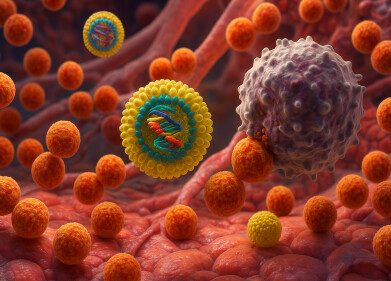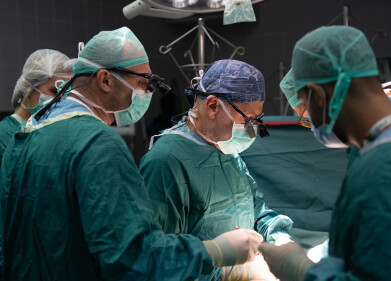News
Would You Wear a Heart Attack Detector? Because Google are Making One!
Dec 19 2014
Renowned for their slick search engine, wonderful Google doodles and exceptional email service, internet giant Google are deeply involved with more aspects of technology than you might think.
One of their most recent projects is the development of nanotechnology that can diagnose cancers, impending strokes and heart attacks and other life-threatening diseases at an earlier stage than is possible at present.
The technology will incorporate disease-detecting nanoparticles which a patient will swallow as a pill. Once in the bloodstream, Google hopes that a wrist-worn sensor will be able to identify small changes in the person’s biochemistry, thus performing as an early warning detector.
Although the work is still in its infancy, Google recognises that early diagnosis is key to tackling diseases, especially those that go undetected and are often untreatable and fatal once diagnosed, such as pancreatic cancer. With notable differences between healthy and cancerous tissues, their aspiration is to be able to continually monitor blood for slight changes in order to diagnose diseases ahead of the appearance of physical symptoms.
How do nanoparticles detect disease?
Nanoparticles are miniscule, with more than 2,000 capable of fitting within a red blood cell. Google plans to design a series of nanoparticles which will match different diseases and conditions. They could, for example, be designed to find evidence of fatty plaque on the verge of breaking from the lining of blood vessels which could stop the blood flow, ultimately leading to a heart attack or stroke. They also plan to design colour-altering porous nanoparticles which change colour when potassium passes through in the hope of detecting kidney disease.
The project is being led by molecular biologist, Dr Andrew Conrad who previously developed an affordable HIV test which is now used worldwide. Discussing the project with the BBC, he said, "What we are trying to do is change medicine from reactive and transactional to proactive and preventative. Nanoparticles... give you the ability to explore the body at a molecular and cellular level. Then [you can] recall those nanoparticles to a single location - because they are magnetic - and that location is the superficial vasculature of the wrist, [where] you can ask them what they saw,".
'Urgent need’ for early disease detectors
Conducted at Google’s research unit, Google X, the project is part of the company’s ongoing investigations into potentially progressive innovations. Chief executive of the Institute of Cancer Research in London, Prof Paul Workman welcomes Google’s contributions.
He told the BBC, "In principle this is great. Any newcomers with new ideas are welcome in the field. There is an urgent need for this. If we can detect cancer or other diseases earlier, then we can intervene with either lifestyle changes or treatment.”
Wearable technology is becoming increasingly popular in many different sectors – one of which is in environmental monitoring. For more information on this topic, read: The Future of Air Monitoring and Wearable Technology.
Digital Edition
Lab Asia Dec 2025
December 2025
Chromatography Articles- Cutting-edge sample preparation tools help laboratories to stay ahead of the curveMass Spectrometry & Spectroscopy Articles- Unlocking the complexity of metabolomics: Pushi...
View all digital editions
Events
Jan 21 2026 Tokyo, Japan
Jan 28 2026 Tokyo, Japan
Jan 29 2026 New Delhi, India
Feb 07 2026 Boston, MA, USA
Asia Pharma Expo/Asia Lab Expo
Feb 12 2026 Dhaka, Bangladesh



















